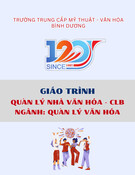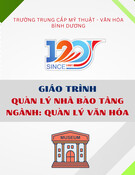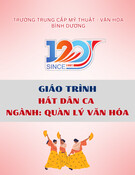Splash Screen
Chapter Introduction
Section 1: Peasants, Trade, and
Cities
Section 2: Medieval Christianity
Section 3: Culture of the High
Middle Ages
Section 4: The Late Middle Ages
Visual Summary
Chapter Menu
The intellectual revival of the High Middle Ages led to the creation of universities. The University of Oxford, shown in this photo, formed when Henry II banned English students from the University of Paris in 1167. In this chapter you will learn more about culture and society during the Middle Ages.
• How do you think universities have
changed since the High Middle Ages?
• What clues in the photograph on this
page tell when the University of
Oxford was built?
Chapter Intro
What caused the formation of universities?
Chapter Intro
Chapter Intro
Peasants, Trade, and Cities
How do advances in agriculture affect both farmers and city dwellers?
Chapter Intro 1
Medieval Christianity
What happens when there is no separation of church and state?
Chapter Intro 2
Culture of the High Middle Ages
How does architecture reflect a society’s values?
Chapter Intro 3
The Late Middle Ages
How do changes in the size of population affect a society?
Chapter Intro 4
Chapter Preview-End
The BIG Idea
Order and Security New farming practices supported population growth, and the revival of trade led to a money-based economy and the rise of cities.
Section 1-Main Idea
Content Vocabulary
• carruca
• patricians
• manor
• guilds
• serfs
• apprentice
•
• money economy
journeymen
• commercial capitalism
• masterpiece
• bourgeoisie
Section 1-Key Terms
Academic Vocabulary
•
technology
• crucial
People and Places
• Venice
• Flanders
Section 1-Key Terms
Do you think that technology plays an important role in the growth of populations?
A. Yes
B. No
A. A B. B
0%
0%
Section 1-Polling Question
The New Agriculture
New inventions for farming and more efficient use of land contributed to population growth in the High Middle Ages.
Section 1
The New Agriculture (cont.)
• The European population doubled in size
between 1000 and 1300.
• The large population increase in Europe was due in part to a more peaceful environment and changes in technology.
• Food production was increased by using
Section 1
scythes, axes, and hoes.
The New Agriculture (cont.)
• A new plow called the carruca led to the growth of farming villages. People had to work together to buy the iron needed to make the plow and share the team of animals needed to pull the plow.
• Europeans also started using three-field
Section 1
rotations, harnessing wind and water, and using animal power to save labor and produce more crops.
Iron was used to make all of the following except:
A. Carruca
B. Nails
C. Axes
D. Boats
0%
0%
Section 1
A. A B. B C. C 0% 0% D. D
The Manorial System
Under the manorial system of the Middle Ages, serfs worked the lands of lords.
Section 1
The Manorial System (cont.)
• The manor was an agricultural estate run by
a lord and worked by serfs.
• Serfs provided labor services, paid rents, and were subject to the control of the lord.
• The life of European peasants was very
Section 1
simple. They lived in wood framed cottages, generally consisting of one or two rooms.
The Manorial System (cont.)
• The seasons of the year dictated peasant
activities.
• Religious holidays provided peasants with
time away from work and brought them into contact with the Church.
• Peasant women had to work in the field,
raise children, and manage the household.
The Peasant’s Wheel of Life
Section 1
The Manorial System (cont.)
• Grains were used for making bread, the daily
food of peasants, and ale. Vegetables, cheeses, and sometimes meat supplemented the meals of peasants.
Section 1
• Water was not easy to obtain, so wine was the drink of the upper classes and ale was the drink of the poor.
By 800, approximately what percentage of the western European population were serfs?
A. 20%
B. 40%
C. 60%
0%
0%
D. 80%
Section 1
A. A B. B C. C 0% 0% D. D
The Revival of Trade
The revival of trade during the High Middle Ages gave rise to a commercial revolution.
Section 1
The Revival of Trade (cont.)
• Cities in strategic locations, such as Venice and Flanders, grew in size and wealth.
• Trade fairs were initiated by cities to
Section 1
encourage more trade.
The Revival of Trade (cont.)
• As trade increased, demand for gold and
silver coins increased. Eventually, a money economy replaced the barter system.
Section 1
• New trading companies and banking firms led to the economic system of commercial capitalism.
What enabled Venice to become a major trading center?
A. Development of a mercantile fleet
B. Low taxes
C. Use of silver coins
0%
0%
D. Influence of Muslim
Section 1
traders A. A B. B C. C 0% 0% D. D
The Growth of Cities
The revival of trade spurred the growth of cities, which became centers for manufacturing and trade.
Section 1
The Growth of Cities (cont.)
• The revival of trade led to a revival of cities.
• Merchants and artisans moved into these
newly revitalized cities and became known as bourgeoisie.
• The people in the cities and towns slowly
gained their independence from local lords. The cities created their own governments, and patricians were elected legally or illegally.
Medieval Trade Routes
Section 1
The Growth of Cities (cont.)
• Medieval towns were surrounded by stone
walls and were cramped and dirty. Pollution and the threat of fire plagued the city inhabitants.
• People began to organize themselves into
Section 1
business associations. These guilds played a leading role in the economic life of cities.
The Growth of Cities (cont.)
• A person who wanted to learn a trade went
through a series of steps.
• People started as unpaid apprentices,
Section 1
earned wages as a journeyman, and could become a master by producing a masterpiece.
Which of the following best describes the cities of medieval Europe?
A. Large houses
B. Narrow streets
C. Clean
D. Stone buildings
0%
0%
Section 1
A. A B. B C. C 0% 0% D. D
Section 1-End
The BIG Idea
Ideas, Beliefs, and Values With its strong leadership, the Catholic Church became a dominant and forceful presence in medieval society.
Section 2-Main Idea
Content Vocabulary
•
lay investiture
• heresy
•
•
interdict
relics
• sacraments
Academic Vocabulary
•
• pursue
remove
Section 2-Key Terms
People, Places, and Events
• Papal States
• Hildegard of Bingen
• Pope Gregory VII
• Franciscans
• Henry IV
• Dominicans
• Concordat of Worms
• Saint Francis of Assisi
• Pope Innocent III
• Assisi
•
• Cistercians
Inquisition
Section 2-Key Terms
A religious leader can be an effective military leader.
A. Agree
B. Disagree
A. A B. B
0%
0%
Section 2-Polling Question
The Papal Monarchy
During the papacy of Pope Innocent III in the thirteenth century, the Catholic Church reached the height of its political power.
Section 2
The Papal Monarchy (cont.)
• The popes of the Catholic Church had political and religious power since they controlled the Papal States.
• Pope Gregory VII wanted to free the Church of political interference from lords and kings and ended the practice of lay investiture.
Section 2
• Gregory claimed that the pope had authority over the entire Christian world including its rulers. If rulers did not accept this, they would be removed.
The Papal Monarchy (cont.)
• Henry IV of Germany disagreed with the pope’s view and a struggle known as the Investiture Controversy ensued.
Section 2
• Under the Concordat of Worms agreement in 1122, a bishop in Germany was elected by the Church, and then the bishop paid homage to the king.
The Papal Monarchy (cont.)
• Papal power was strengthened under
Pope Innocent III who used the interdict to get his way.
Section 2
• People feared not receiving sacraments, and pressured rulers to listen to the pope.
Who fought the idea that the pope is the supreme ruler of all Christian lands?
A. Gregory VII
B. Henry IV
C. Innocent III
D. Philip Augustus
0%
0%
Section 2
A. A B. B C. C 0% 0% D. D
New Religious Orders
As religious enthusiasm spread through Europe, new monastic orders emerged.
Section 2
New Religious Orders (cont.)
• In 1098, a group of monks who were
unhappy with the lack of discipline at their monastery started the Cistercian order.
• Women increasingly became involved in
Section 2
religious orders. Intellectual women, such as Hildegard of Bingen, found convents a haven for their activities.
New Religious Orders (cont.)
• In the 1200s, the Franciscans were founded
by St. Francis of Assisi. Francis was a wealthy merchant from Assisi who decided to give up his worldly possessions and preach to the poor.
• The Franciscans became popular for their
Section 2
simplicity and devotion to the poor.
New Religious Orders (cont.)
• The Dominican order was founded by
Dominic de Guzmán.
• The Dominicans were dedicated to
defending Church teachings from heresy.
• To deal with heretics, the Church created the
Section 2
Inquisition. This court had regular proceedings to find and try heretics.
Which monastic order lived a strict life due to the lack of discipline in their monastery?
A. Cistercians
B. Bingens
C. Franciscans
D. Dominicans
0%
0%
Section 2
A. A B. B C. C 0% 0% D. D
Religion in the High Middle Ages
Ordinary people observed the Church’s sacraments, venerated saints, and took pilgrimages to holy shrines.
Section 2
Religion in the High Middle Ages (cont.)
• The Church in the High Middle Ages played
a vital role in the lives of Europeans.
• Some people, because of their holiness,
were called saints and were revered by the people.
• Relics were usually the bones of saints or
objects connected to saints.
• Worshipping relics and pilgrimages to holy
Section 2
sites were important to European Christians.
Which of the following was a site of the Christian pilgrimages?
A. Rome
B. Venice
C. Cairo
D. Flanders
0%
0%
Section 2
A. A B. B C. C 0% 0% D. D
Section 2-End
The BIG Idea
New Technologies Technological innovations made Gothic cathedrals possible, while an intellectual revival led to the formation of universities.
Section 3-Main Idea
Content Vocabulary
•
theology
• vernacular
• scholasticism
• chanson de geste
Academic Vocabulary
• construction
• corporation
Section 3-Key Terms
People, Places, and Events
• Bologna
• Paris
• Oxford
• Aristotle
• Saint Thomas Aquinas
• Summa Theologica
Section 3-Key Terms
Architecture is an important representation of society’s ideals and values.
A. Agree
B. Disagree
A. A B. B
0%
0%
Section 3-Polling Question
Architecture
Gothic cathedrals, an artistic triumph of the High Middle Ages, were built in the twelfth and thirteenth centuries.
Section 3
Architecture (cont.)
• In the eleventh and twelfth centuries,
churches were built in the Romanesque style.
• The construction of the Romanesque
Section 3
churches was similar to the basilicas of the Roman era, except that instead of flat roofs, they had arched vaults.
Architecture (cont.)
• Romanesque churches required massive pillars to hold up the stone roofs, and had little light due to the lack of windows.
• A new style, called Gothic, utilized ribbed vaults and flying buttresses to allow for higher ceilings and thinner walls.
Section 3
• Gothic cathedrals were spectacular churches with stained-glass windows that symbolized the spirituality of the people.
Why were the walls of Romanesque churches so thick?
A. To protect against attack
B. To protect the clergy
C. To protect the relics of
the church
0%
0%
D. To support the stone roof
Section 3
A. A B. B C. C 0% 0% D. D
Universities
Medieval university students applied scholasticism to the study of theology.
Section 3
Universities (cont.)
• The High Middle Ages saw the rise of
universities.
• The first European university was
established in Bologna, Italy. Soon, universities were set up in Paris, France, and Oxford in England.
• Students could earn a doctorate in law,
medicine, or theology.
University Locations
Section 3
Universities (cont.)
• Theology, the most highly regarded subject,
was influenced by scholasticism.
• Scholasticism attempted to reconcile
Christian teachings with the works of the Greek philosophers such as Aristotle, who reached conclusions by rational thought, not by faith.
Section 3
• In the 1200s, Saint Thomas Aquinas wrote his masterpiece Summa Theologica which concluded that reason could not conflict with truths arrived at through faith.
Where was the first university in Europe located?
A. Rome, Italy
B. Bologna, Italy
C. Oxford, England
D. Paris, France
0%
0%
Section 3
A. A B. B C. C 0% 0% D. D
Vernacular Literature
Troubadour poetry and the heroic epic poem were popular forms of vernacular literature in the twelfth century.
Section 3
Vernacular Literature (cont.)
• Latin was the universal language used in the
Church and schools.
• New literature began to be written in vernacular, or everyday speech.
• The most popular vernacular literature of the
twelfth century was troubadour poetry.
• Chanson de geste, or the heroic epic, was
Section 3
also popular.
Who mainly was the subject of troubadour poetry?
A. Monks
B. Knights and nobles
C. Aristocratic women
D. Peasants
0%
0%
Section 3
A. A B. B C. C 0% 0% D. D
Section 3-End
The BIG Idea
Devastation of War Disastrous forces overwhelmed Europe in the fourteenth century with lasting consequences.
Section 4-Main Idea
Content Vocabulary
• anti-Semitism
• new monarchies
•
taille
Academic Vocabulary
• abandoned
• consequences
Section 4-Key Terms
People, Places, and Events
• Black Death
• Henry V
• Pope Boniface VIII
• Agincourt
• King Philip IV
• Joan of Arc
• Avignon
• Orléans
•
• Great Schism
Isabella
• John Hus
• Ferdinand
Section 4-Key Terms
Do you think a deadly, communicable disease would significantly change your community economically and socially?
A. Yes
B. No
A. A B. B 0%
0%
Section 4-Polling Question
The Black Death
Spreading throughout Europe during the mid-fourteenth century, the Black Death had disastrous social and economic effects.
Section 4
The Black Death (cont.)
• During the 1300s, the Black Death killed approximately one-third of the European population.
• The plague generally followed trade routes. It devastated urban centers, and villages in Germany and England were wiped off the map.
• The Black Death’s most common form was the bubonic plague, which was spread by fleas on rats.
Spread of Black Death
Section 4
The Black Death (cont.)
• The disease was so lethal, that family
members often had to abandon one another.
• Effects of the Black Death:
– Approximately one-third to one-half of the
population killed
– Rise in anti-Semitism
– Decline in trade, labor shortages, and decreased demand for food
Spread of Black Death
Section 4
The Black Death (cont.)
– Decline of serfdom and the influence of
the Church
– Growth of cities and peasant revolts
Effects of the Black Death
Section 4
What animal is blamed for carrying the deadly bubonic plague?
A. Dog
B. Bird
C. Rat
D. Cat
0%
0%
0%
0%
A. A B. B C. C D. D
Section 4
Decline of Church Power
The Great Schism of the Catholic Church caused great political conflict and left Europe divided for four decades.
Section 4
Decline of Church Power (cont.)
• In the 13th century, a struggle began
between Pope Boniface VIII and King Philip IV of France over the king’s right to tax the clergy.
• The struggle ended when Boniface VIII died
after fleeing Philip’s forces. Philip then engineered the election of a French pope, Clement V, in 1305.
Avignon
Section 4
Decline of Church Power (cont.)
• Clement V moved to Avignon in southern France. From 1305 to 1377 popes lived in Avignon.
Section 4
• The election of the Italian Pope Urban VI was declared invalid by French cardinals, who elected a French pope which began the Great Schism.
Decline of Church Power (cont.)
• John Hus, a Czech reformer, was burned at
the stake for heresy for his attempts at reforming the Church.
Section 4
• Both the papacy and the Church lost political and religious power due to the crises of the fourteenth century.
What caused the struggle between Pope Boniface VIII and King Philip IV?
A. Boniface took control of
the French army.
B. Philip wanted a French pope.
C. Philip wanted to tax
the clergy.
0%
0%
0%
0%
D. Boniface wanted to move
the Papal States to France.
A. A B. B C. C D. D
Section 4
The Hundred Years’ War
England and France waged the long, violent Hundred Years’ War.
Section 4
The Hundred Years’ War (cont.)
• The Hundred Years’ War began in 1337
when the king of France seized the English controlled duchy of Gascony in France.
• At the Battle of Crécy in 1346, English archers using longbows devastated the French knights.
Hundred Years’ War
Section 4
The Hundred Years’ War (cont.)
• In 1415, the English king Henry V again
defeated the French at the Battle of Agincourt and the English controlled northern France.
• A peasant named Joan of Arc believed that God had chosen her to save France. The inspired French army seized Orléans.
• The French eventually won the war in 1453,
Section 4
aided by the use of the cannon and gunpowder.
How were the English able to defeat the French knights at Crécy and Agincourt?
A. Horses
B. Longbows
C. The navy
D. Cannons
0%
0%
0%
0%
A. A B. B C. C D. D
Section 4
Political Recovery
France, England, and Spain emerged as new monarchies by the late 1400s.
Section 4
Political Recovery (cont.)
• In the 1400s, a number of new rulers in
Section 4
Europe attempted to centralize power and establish new monarchies.
Political Recovery (cont.)
• The New Monarchies:
– France
• France became unified after the Hundred
Years’ War.
• There was a permanent royal income due to
increased taille.
• The monarchy relied on the lesser nobles and
middle class for royal power.
•
Industry and commerce was promoted.
Section 4
Political Recovery (cont.)
– England
• The Tudor dynasty was established when Henry Tudor ended the Wars of the Roses.
• Henry VII abolished private armies.
• Henry VII became popular with his low taxes.
Section 4
Political Recovery (cont.)
– Spain
• During the Middle Ages, Christian kingdoms
regained land from the Muslims.
• The Christian kingdoms were unified when
Isabella of Castile married Ferdinand of Aragon in 1469.
• Ferdinand and Isabella enforced strict
conformity to Catholicism.
Section 4
Political Recovery (cont.)
• The Holy Roman Emperor was a position held by the Hapsburg dynasty of Austria.
• Eastern Europe was unable to centralize due
to religious and political differences.
Section 4
• In Russia, Ivan III overthrew the Mongols and established a new Russian state by 1480.
How did the French monarchy become wealthier during the reign of Louis XI?
A. Annexing more land
B. Promoting trade
C. Selling the land of
the clergy
0%
0%
0%
0%
D. Increasing the taille
A. A B. B C. C D. D
Section 4
Section 4-End
Society in the HIGH MIDDLE AGES
• Farming inventions and efficient use of land contributed to population growth.
• Under the manorial system,
serfs were legally bound to the land they worked for the lord.
• Revival of trade changed the economy from a
barter system to one based on money.
• As trade grew, cities expanded and became
manufacturing and trade centers.
VS 1
CATHOLICISM, INNOVATIONS, AND INTELLECTUAL REVIVAL in the Middle Ages
• Political power of the Catholic Church
peaked during the papacy of Pope Innocent III.
• Religious fervor led to new
monastic orders.
• Advances in technology allowed the
building of impressive Gothic cathedrals.
• Europe’s first universities were founded. • Popular troubadour poetry and heroic epic poems were
written in the vernacular.
VS 2
Disruptive Forces of the LATE MIDDLE AGES
• The Black Death spread
through Europe, devastating societies and economies.
• The Great Schism damaged the Church’s power and divided Europe.
•
In the Hundred Years’ War, peasant foot soldiers, not knights, won the chief battles.
• Recovery began in the late 1400s as new
monarchies emerged in France, England, and Spain.
VS 3
VS-End
Figure 1
Figure 2
Figure 3
Figure 4
Figure 5
Figure 6
Figure 7
Chapter Transparencies Menu
Chapter Transparency
Unit Time Line Transparency
Select a transparency to view.
Chapter Trans Menu
Cause-and-Effect Transparency
Chapter Trans
Unit Timeline Trans
CnETrans
DFS Trans 1
DFS Trans 2
DFS Trans 3
DFS Trans 4
carruca
Vocab1
a heavy, wheeled plow with an iron plowshare
manor
Vocab2
in medieval Europe, an agricultural estate that a lord ran and peasants worked
serf
Vocab3
in medieval Europe, a peasant legally bound to the land who had to provide labor services, pay rents, and be subject to the lord’s control
money economy
Vocab4
an economic system based on money rather than barter
commercial capitalism
Vocab5
economic system in which people invest in trade or goods to make profits
bourgeoisie
Vocab6
the middle class, including merchants, industrialists, and professional people
patrician
Vocab7
wealthy, powerful landowners who formed the ruling class in the Roman Republic
guild
Vocab8
a business association that is associated with a particular trade or craft; guilds evolved in the twelfth century and played a leading role in the economic life of medieval cities
apprentice
Vocab9
one who learns a trade by practical experience under skilled craftspeople
journeyman
Vocab10
a worker who has learned a trade and works for wages for other masters
masterpiece
Vocab11
piece created by a journeyman who aspires to be a master craftsperson; it allowed the members of a guild to judge whether the journeyman was qualified to become a master and join the guild
technology
Vocab12
the science or study of the practical or industrial arts; applied sciences
crucial
Vocab13
essential; important
lay investiture
Vocab14
the practice by which secular rulers both chose nominees to church offices and gave them the symbols of their office
interdict
Vocab15
a decree by the pope that forbade priests to give the sacraments of the Church to the people
sacrament
Vocab16
Christian rites
heresy
Vocab17
the denial of basic Church doctrines
relic
Vocab18
bones or other objects connected with saints; considered worthy of worship by the faithful
pursue
Vocab19
to follow up or proceed with
remove
Vocab20
to eliminate
theology
Vocab21
the study of religion and God
scholasticism
Vocab22
a medieval philosophical and theological system that tried to reconcile faith and reason
vernacular
Vocab23
the language of everyday speech in a particular region
chanson de geste
Vocab24
a type of vernacular literature; this heroic epic was popular in medieval Europe and described battles and political contests
construction
Vocab25
manner or method of building
corporation
Vocab26
form of business organization that has a separate legal entity with all the rights and responsibilities of an individual, including the right to buy and sell property, enter into legal contracts, and to sue and be sued
anti-Semitism
Vocab27
hostility toward or discrimination against Jews
new monarchy
Vocab28
in the fifteenth century, government in which power had been centralized under a king or queen (i.e., France, England, and Spain)
taille
Vocab29
an annual direct tax, usually on land or property, that provided a regular source of income for the French monarchy
abandoned
Vocab30
deserted
consequence
Vocab31
the effect or result of an action
To use this Presentation Plus! product:
Click the Forward button to go to the next slide.
Click the Previous button to return to the previous slide.
Click the Home button to return to the Chapter Menu.
Click the Transparency button from the Chapter Menu, Chapter Introduction slides, or Visual Summary slides to access the transparencies that are relevant to this chapter. From within a section, click on this button to access the relevant Daily Focus Skills Transparency.
Click the Return button in a feature to return to the main presentation.
Click the History Online button to access online textbook features.
Click the Reference Atlas button to access the Interactive Reference Atlas.
Click the Exit button or press the Escape key [Esc] to end the slide show.
Click the Help button to access this screen.
Links to Presentation Plus! features such as Maps in Motion, Graphs in Motion, Charts in Motion, Concepts in Motion, and figures from your textbook are located at the bottom of relevant screens.
Help
This slide is intentionally blank.
End of Custom Shows



![Bài giảng Lịch sử thế giới trung đại [mới nhất]](https://cdn.tailieu.vn/images/document/thumbnail/2025/20250506/vinarutobi/135x160/4361746531976.jpg)
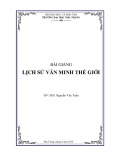
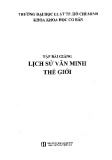

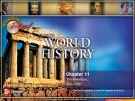
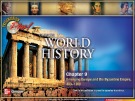
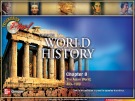
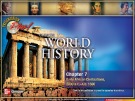
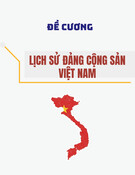
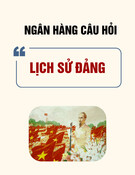

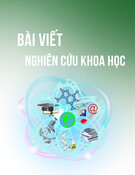
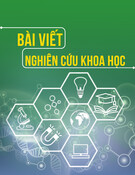
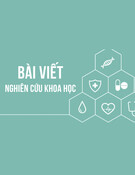
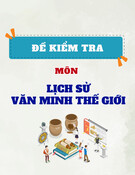
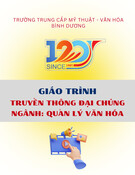
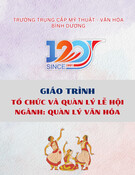
![Giáo trình Tổ chức và Quản lý Hoạt động Văn hóa Thông tin Cơ sở (Ngành Quản lý Văn hóa - Trung cấp) - Trường Trung cấp Mỹ thuật - Văn hóa Bình Dương [Mới nhất]](https://cdn.tailieu.vn/images/document/thumbnail/2025/20251110/kimphuong1001/135x160/17861762748492.jpg)
